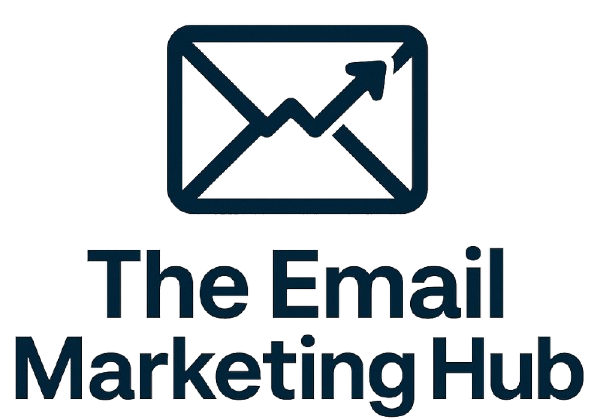How We’re Leveraging Allovance to Supercharge Strategic Market Research
By Emily Bielak, Director
Earlier this year, The Martec Group announced a new partnership with Allovance, a platform built around strategic planning and capital allocation. I’ve been closely involved in helping integrate their methodology and software into our work, and I want to share a little more context on what this means for our clients.
For years, Martec has been known for delivering deep, actionable insights through our market research and due diligence projects. But one challenge we’ve often seen is that clients are sometimes left wondering: So What?, and Now what? They’ve invested in data, analysis, and recommendations, yet the path to actually prioritizing and executing on those insights isn’t immediately clear to them. That’s why we have always been big believers in answering those two vital questions for clients: So what? and Now what?
Data without direction, after all, is only telling the client what’s happened in the past. To truly supercharge our research work, the true value is providing data-informed intelligence on what to do going forward! Our partnership with Allovance allows us to provide additional tech-enabled horsepower and science-backed brainpower into the strategic planning work we do for our clients.
Why Allovance?
Allovance offers both a structured methodology and a software platform that help organizations move from insights to aligned, actionable strategies. As a certified Decision Coach-in-training, I’ve been learning how to use their five-step process to facilitate workshops with client teams. The process helps groups evaluate initiatives against a customized set of decision-making factors, such as impact, complexity, urgency, and budget, and then build a roadmap for execution.
At its core, Allovance is a strategic alignment platform built to help organizations make better, more transparent decisions about where to allocate their capital/resources. It is structured around a five-step methodology grounded in Ph.D. research from the University of Michigan: Strategize, Compare, Quantify, Score, and Select. Allovance applies proven decision science techniques, such as the Analytical Hierarchy Process (AHP) for pairwise comparisons, to capture diverse stakeholder perspectives and transform them into a weighted Strategic Value Scorecard (mutually exclusive, collectively exhaustive strategic priorities & objectives) that guides capital and resource allocation.
What makes the Allovance methodology uniquely powerful is its ability to quantify subjective criteria and include it in the decision-making process. The platform also shows how individual projects or investments create value across multiple strategic priorities. Rather than viewing initiatives in silos, organizations can measure the strategic alignment of their initiatives across all their priorities simultaneously, something traditional planning methods often miss. Every project and investment decision can be linked to the organization’s strategic goals, with explicit scoring that shows exactly how much each investment contributes to the scorecard. The end result gives organizations clarity on what to prioritize and why, backed by data that everyone contributed to creating. It turns what is typically a political or “gut-feel” process into something objective and defensible.
What I love about this approach is that it takes the guesswork out of planning. Instead of relying on intuition, group votes, or subjective debates, clients walk away with an objective, tech-enabled, data-supported roadmap and clear view of where to focus their energy and resources.
Four Ways We’re Applying It
While there are endless ways Allovance can be applied, We’ve been focusing on four main use cases for our clients.
1. Strategic Planning
Organizations across many nonprofit and for-profit sectors often come to us looking for help building a three- or five-year strategic plan. These organizations need alignment among diverse stakeholders, and they need a clear way to prioritize what matters most.
Here’s where the facilitated workshop element is so valuable. A certified Decision Coach moderates the process, guiding participants through structured exercises inside the Allovance software. Each stakeholder can provide input individually, and the platform aggregates that input into a weighted scoring model. This means participants don’t have to debate endlessly or rely on consensus-by-committee. Instead, they can leverage a tech-enabled methodology to see their collective input translated into clear priorities and a roadmap everyone can stand behind. It’s taking our approach to strategic planning post-research, which we’ve championed for years, and injected greater power and sophisticated data science into the process.
With Allovance, we can guide clients through this structured process that surfaces what’s most urgent, what’s most feasible, and what will deliver the greatest impact. At the end, they don’t just have a list of priorities; they have a roadmap that everyone has bought into and a way to track progress against those goals.
2. Private Equity Due Diligence: Martec Deal Score
Private equity has always been a big part of our work, and Allovance adds rigor to that practice. We’ve created a program we call Martec Deal Score, where we evaluate Confidential Information Memoranda (CIMs) using Allovance’s scoring system. Each CIM is scored across multiple dimensions—market growth potential, profitability, customer dynamics, barriers to entry, IP defensibility, and more. What’s powerful is that each of these factors can be weighted according to the client’s investment thesis. For example, a growth-equity investor may weight revenue expansion higher, while a roll-up strategy may put more emphasis on synergies and stickiness of customer relationships.
The real power, though, comes from customization. Each PE client can have its own tailored scorecard that reflects its unique investment thesis. That means every CIM is evaluated against criteria that truly matter to the PE firm, and over time, it can build a living database of deal evaluations the deal team can rely on.
3. Corporate Development and Market Mapping
Allovance is also a powerful tool for corporate development teams. We’ve used it in projects where a client wanted to explore product categories, sub-markets, adjacent markets; identify acquisition targets; and evaluate which companies would create the most value within the constraints of a predetermined acquisition budget.
For one engagement, we helped a client looking to grow EBITDA by $100 million. We mapped adjacent markets, identified hundreds of potential acquisition targets, and then used Allovance to score and prioritize them. It allowed us to show not only which companies were the best fit, but also which combinations of acquisitions could help them hit their growth goals.
It’s the kind of analysis we’ve always worked with clients to provide, but now we can do it with far more precision and with more science behind our methodologies.
4. Prioritization for Fortune 1000 Strategy Teams
The last “bucket” is more of a catch-all, of sorts: using Allovance to prioritize initiatives and build roadmaps in situations outside of traditional planning or M&A.
For example, when we worked on a customer experience transformation project for a client, the team had a list of improvements to make to its service offering. Traditionally, that list might have been prioritized by a group vote. With Allovance, we could score the initiatives scientifically and then build a multi-year roadmap for implementation.
We’ve also seen how this approach could apply in product management, customer experience management, value-creation prioritization, weighing tradeoffs in budgeting constraints, and even in customer service program design. It’s flexible enough to adapt to different situations but structured enough to create alignment and clarity every time.
What This Means for Our Clients
For me, the biggest takeaway is that we’re now moving even further beyond the point of reporting an accounting of what the data says. With Allovance, we can now help clients more deeply explore the how behind the what. We can take the insights from our research and extend them into action plans that are prioritized, budget-conscious, and aligned with the organization’s goals.
That means:
- Moving seamlessly from research findings to execution.
- Prioritizing initiatives objectively, instead of relying on gut feel.
- Ensuring all stakeholders are aligned and engaged.
- Objectively analyzing documented budgets against future spending priorities.
- Customizing scorecards and roadmaps to reflect what really matters to each client.
Looking Ahead
This is just the beginning. As a certified Allovance Decision Coach, I’ll be able to supplement our market research expertise with decision science and collaboration techniques, adding more value to our engagements and workshops.. As we continue to explore new applications, we’re excited to see how this partnership strengthens Martec’s ability to deliver not just insights, but outcomes.
For organizations navigating complex decisions—whether in Private Equity, corporate development, or strategic planning—this collaboration gives us a powerful new way to help even more and have even greater impact.
At the end of the day, what we’re delivering is confidence. Confidence that you’re investing in the right initiatives, confidence that your team is aligned, and confidence that you have a roadmap to reach your goals.
That’s what makes the Martec–Allovance partnership so exciting: it’s about turning research into results.

